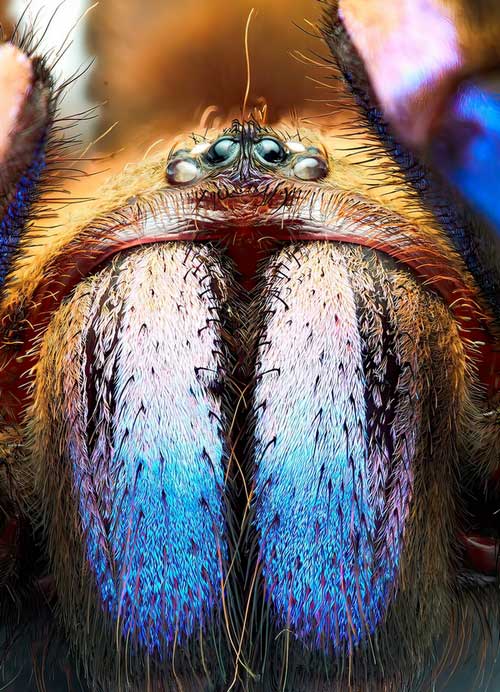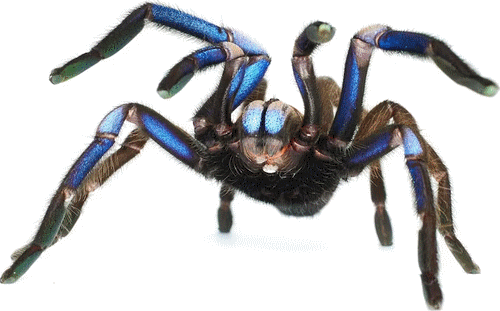September 2023
The spider, which can grow nearly three inches long, has iridescent stripes of neon color on its legs, back and mouthparts.
Between sky and sea, nature seems to prefer blue, as do we humans. Yet the color is rare in nature - especially in a blue-violet hue that resembles the color of electric sparks, as a research team described a new species of tarantula in southern Thailand.
 Courtesy of National Geographic
Courtesy of National Geographic
The spider, called Chilobrachys natanicharum, was already known in the pet trade as the electric blue tarantula, but a recent study published in the journal Zookeys finally confirmed that it is a unique species.
Of the 900 known tarantula species, only about four percent have blue coloration, said Sarah J. Kariko, an evolutionary biologist at Harvard University.
Although pigments form other colors in animals, such as red and yellow, the process is different with blue. When hit by light, nanostructures in cells reflect a blue color back to our eyes, says Kariko, who was not involved in the new research.
Such structural colors often create iridescent effects, said Ling Li, an associate professor at Virginia Tech who studies spin colors with Kariko.
It's like a peacock feather. If you change the angle, the color changes a little bit, whereas colors made of pigment do not change with the angle of your gaze.
The tarantula is also the first ever discovered in a mangrove forest in Thailand, research leader Narin Chomphuphuang, an arachnologist at Khon Kaen University in Thailand, says.
For the research, Chomphuhuang and colleagues went on an expedition to the mangroves of Phang-Nga province, where they searched at night in the damp, muddy vegetation for the tarantula's identifying mark: Proud webs covering its burrow.
In this case, the team spotted a blue tarantula in the hollow of a tree, which they had to climb to lure the animal out. On another expedition, the spider was found to live in evergreen trees, a distinct ecosystem.
We are amazed to discover that they can also thrive in upland forests with evergreen trees. The incredible adaptation of this spider is fascinating.
Back in the lab, the scientists compared the tarantula's DNA and physical characteristics with those of similar species and identified important differences, including their coloration.
The tarantula's name, C. natanicharum, refers to Natakorn Changrew and Nichada Changrew, two directors of Thai real estate developer Nichada Properties Co, Ltd. who won an auction to name the spider. Proceeds will go toward health care and education for the Lahu, an indigenous group in southern Thailand.
 Courtesy of National Geographic
Courtesy of National GeographicIt's likely that the tarantula's main ancestor had some blue, or could produce blue nanostructures, says Sebastian Echeverri, an independent arachnologist and science communicator from Pittsburgh.
Echeverri points to a 2020 study showing that green and blue evolved independently many times in tarantulas, suggesting that the colors play a crucial role in their lives.
In general, many animals develop bright colors to warn predators, camouflage themselves or attract mates.
It is possible, for example, that the colors of the newly discovered tarantula are involved in mating, Kariko said, because the large spiders have dynamic courtship rituals.
Tarantulas do not have sharp color vision, but these colors are so bright that "it is reasonable to say that this is something that should be seen," Echeverri says.
For example, the startling blue on the appendages in front of the tarantula's mouth can deter predators by saying, "Look at me! I have big fangs! Don't come any closer!"
Whatever the reason, the new tarantula is likely to remain a favorite.
"We humans are really attracted to rare, shiny colors," says Echeverri, "so we remember those species."
Reference.. National Geographic